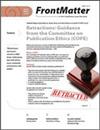Use of Highway Infrastructure by Bats: A Literature Review and Survey of the Trans-Pecos Region of Texas
IF 0.5
4区 环境科学与生态学
Q4 BIODIVERSITY CONSERVATION
引用次数: 0
Abstract
Abstract. Bats are important components of nature and provide both monetary and nonmonetary benefits to mankind. While anthropogenic effects on wildlife and their habitats are typically viewed as negative, highway infrastructure might benefit numerous species of plants and animals, bats in particular. Cracks, crevices, and grooves within structures provide places for bats to roost. Here we review the literature on this topic as well as describe results of our own survey of bridges and culverts in the Trans-Pecos of Texas. We surveyed 204 bridges and 768 culverts between 2018 and 2019. We observed 7 species of bats using bridges or culverts as day roosts. Frequency of use of highway structures for bats varied depending on characteristics of structures. Prestressed concrete box girder bridges were the bridge type most used by bats (90.91% occupied), while steel I-beam bridges were the least used (0%). Box and pipe culverts were used in equal proportions (16.5% of box culverts and 13.7% of pipes were occupied), likely because different kinds of culverts present similar types of places for bats to roost. These findings contribute to other surveys around the country and can inform management plans for departments of transportation and wildlife managers. Resumen. Los murciélagos son componentes importantes de la naturaleza y proporcionan beneficios tanto monetarios como no monetarios a la humanidad. Si bien los efectos antropogénicos en la vida silvestre y sus hábitats se suelen considerar negativos, la infraestructura de carreteras podría beneficiar a numerosas especies de plantas y animales, en particular a los murciélagos. Las grietas, hendiduras y surcos dentro de las estructuras proporcionan lugares de descanso para los murciélagos. Revisamos la literatura sobre este tema y describimos los resultados de nuestro propio estudio de puentes y alcantarillas en Trans-Pecos de Texas. Inspeccionamos 204 puentes y 768 alcantarillas entre 2018 y 2019. Observamos 7 especies de murciélagos que usan puentes o alcantarillas como dormitorios durante el día. La frecuencia en que los murciélagos usaron las estructuras de carreteras varió según las características de las mismas. Los puentes de vigas cajón hechos de hormigón fueron los más utilizados por los murciélagos (90.91% de ocupación). Mientras que, los puentes de acero con vigas en I (0%) fueron los menos utilizados. Las alcantarillas en caja y tubería fueron usadas en proporciones iguales (16.5% alcantarillas en caja y 13.7% tuberías ocupadas), probablemente porque los diferentes tipos de alcantarillas presentan tipos similares de lugares de descanso. Estos hallazgos contribuyen a otros estudios en todo el país y pueden ofrecer información para los planes de gestión de los departamentos de transporte, así como para administradores de la vida silvestre.蝙蝠利用公路基础设施:德克萨斯州跨佩科斯地区的文献综述和调查
摘要蝙蝠是大自然的重要组成部分,为人类提供了金钱和非金钱的利益。虽然人类活动对野生动物及其栖息地的影响通常被认为是负面的,但高速公路基础设施可能会使许多动植物受益,尤其是蝙蝠。建筑物内部的裂缝、裂缝和凹槽为蝙蝠提供了栖息的场所。在这里,我们回顾了关于这一主题的文献,并描述了我们自己对德克萨斯州Trans-Pecos的桥梁和涵洞的调查结果。2018年至2019年期间,我们调查了204座桥梁和768个涵洞。我们观察到7种蝙蝠以桥梁或涵洞为日间栖息场所。蝙蝠使用公路结构的频率取决于结构的特性。预应力混凝土箱梁桥是蝙蝠使用最多的桥梁类型(占90.91%),钢工字梁桥使用最少(占0%)。箱形涵洞和管形涵洞的使用比例相等(16.5%的箱形涵洞和13.7%的管形涵洞被占用),可能是因为不同类型的涵洞为蝙蝠提供了类似的栖息场所。这些发现有助于全国各地的其他调查,并可以为交通部门和野生动物管理人员的管理计划提供信息。Resumen。自然环境的重要组成部分是由受益于货币的人构成的,而不是由货币和人道主义构成的。虽然人类的遗传变异对人类的影响不大,但对人类的遗传变异也有负面的影响,因此,人类遗传变异的基础设施对许多物种的植物和动物,特别是对人类的遗传变异有利。最后,最后,最后,最后,最后,最后,最后,最后,最后,最后,最后,最后,最后,最后,最后,最后,最后,最后,最后,最后,最后,最后,最后,最后,最后,最后,最后,最后,最后,最后,最后,最后,最后,最后,最后。在得克萨斯的跨佩科斯地区,对文学进行了重新研究。2018年至2019年,共有768个州和204个州进入检查。观察到7种不同种类的空气污染,如空气污染、空气污染、空气污染、空气污染等。La freuencia en que los murciciastlaos usaron as structuras de carreteras varió según las características de las mismas。Los puentes de vigas cajón hechos de hormigón fueron Los más utilitzados polos murciacimacos (90.91% de ocupación)。Mientras que, los puentes de acero con vigas en (0%) fueron los menos利用率。Las alcantarillas en caja y tubería fueron usadas en proporciones iguales (16.5% alcantarillas en caja y 13.7% tuberías ocupadas),可能是由于不同部位的alcantarillas呈现出相似部位的de lugares de descanso。Estos hallazgos为其他工作室的工作提供了帮助,例如país通过访问información para los planes de gestión de los departamentos de transporte, así como para administradores de la vida silvestre。
本文章由计算机程序翻译,如有差异,请以英文原文为准。
求助全文
约1分钟内获得全文
求助全文
来源期刊

Western North American Naturalist
环境科学-生态学
CiteScore
0.90
自引率
16.70%
发文量
39
审稿时长
>36 weeks
期刊介绍:
The Western North American Naturalist places neither restriction nor preference on manuscripts within the disciplines of the biological sciences. Each issue treats diverse taxa from the perspectives of various disciplines (e.g., ecology, population dynamics, behavior, systematics, anatomy, and physiology).
 求助内容:
求助内容: 应助结果提醒方式:
应助结果提醒方式:


